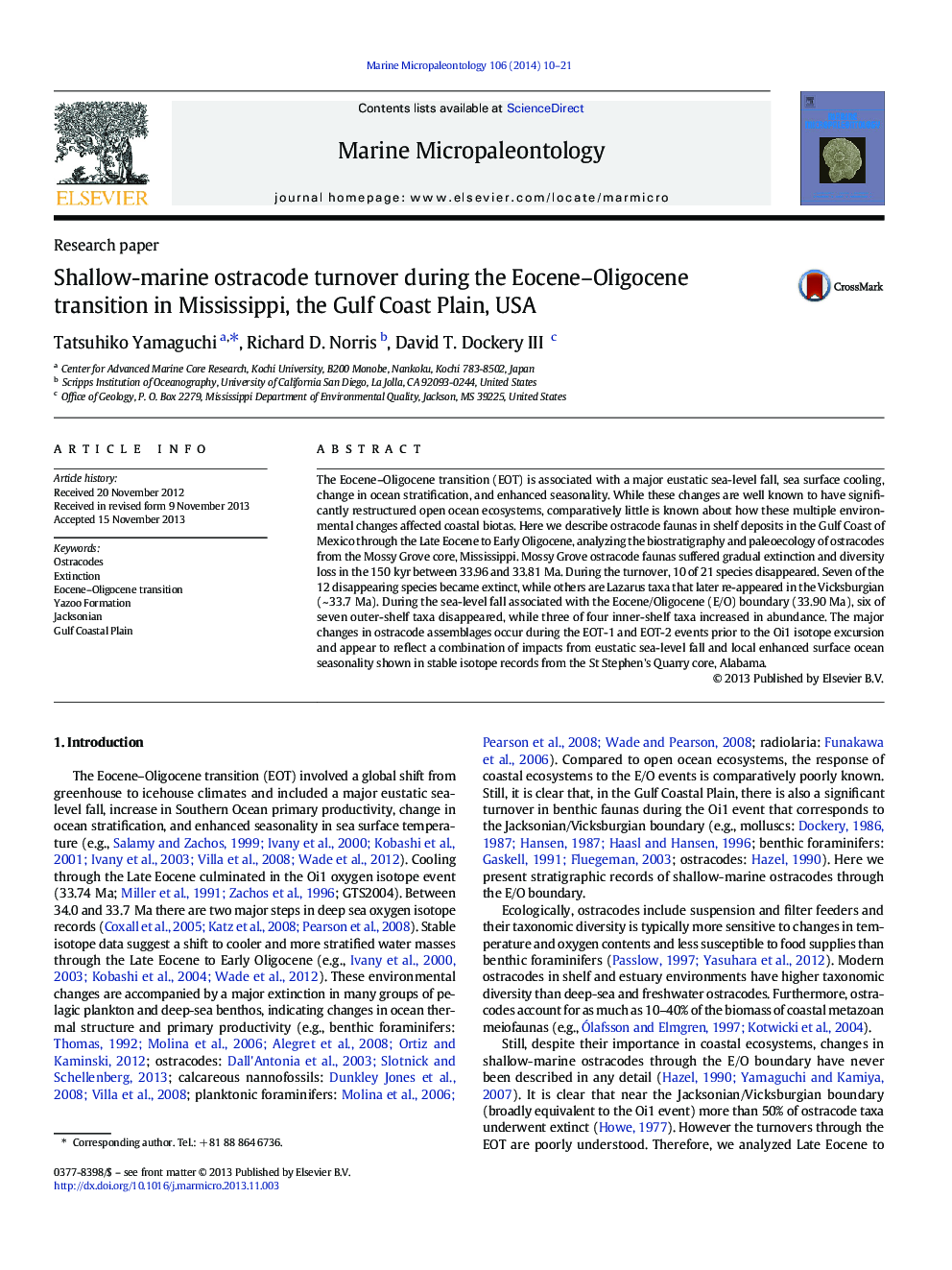| Article ID | Journal | Published Year | Pages | File Type |
|---|---|---|---|---|
| 6448565 | Marine Micropaleontology | 2014 | 12 Pages |
Abstract
The Eocene-Oligocene transition (EOT) is associated with a major eustatic sea-level fall, sea surface cooling, change in ocean stratification, and enhanced seasonality. While these changes are well known to have significantly restructured open ocean ecosystems, comparatively little is known about how these multiple environmental changes affected coastal biotas. Here we describe ostracode faunas in shelf deposits in the Gulf Coast of Mexico through the Late Eocene to Early Oligocene, analyzing the biostratigraphy and paleoecology of ostracodes from the Mossy Grove core, Mississippi. Mossy Grove ostracode faunas suffered gradual extinction and diversity loss in the 150Â kyr between 33.96 and 33.81Â Ma. During the turnover, 10 of 21 species disappeared. Seven of the 12 disappearing species became extinct, while others are Lazarus taxa that later re-appeared in the Vicksburgian (~Â 33.7Â Ma). During the sea-level fall associated with the Eocene/Oligocene (E/O) boundary (33.90Â Ma), six of seven outer-shelf taxa disappeared, while three of four inner-shelf taxa increased in abundance. The major changes in ostracode assemblages occur during the EOT-1 and EOT-2 events prior to the Oi1 isotope excursion and appear to reflect a combination of impacts from eustatic sea-level fall and local enhanced surface ocean seasonality shown in stable isotope records from the St Stephen's Quarry core, Alabama.
Related Topics
Physical Sciences and Engineering
Earth and Planetary Sciences
Palaeontology
Authors
Tatsuhiko Yamaguchi, Richard D. Norris, David T. III,
